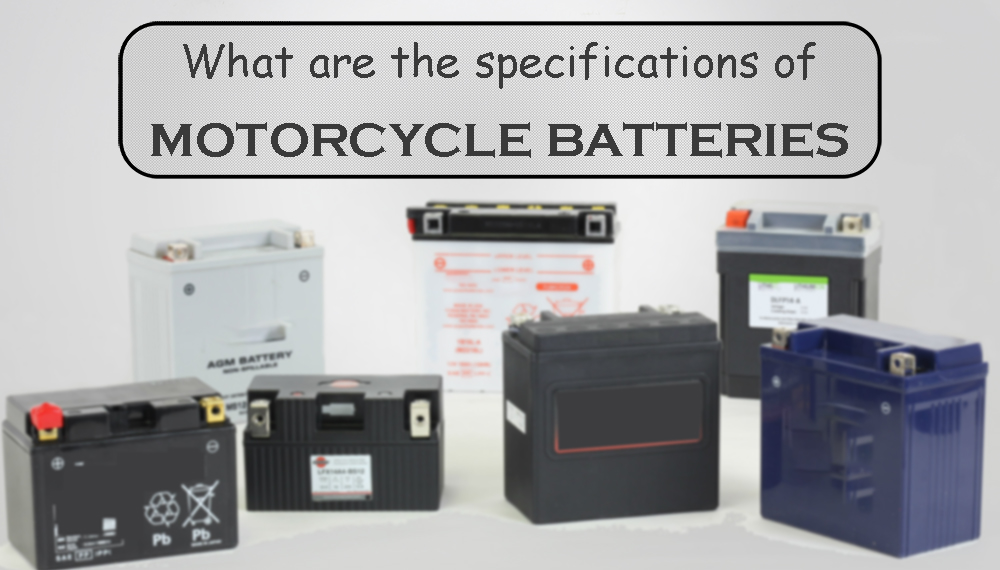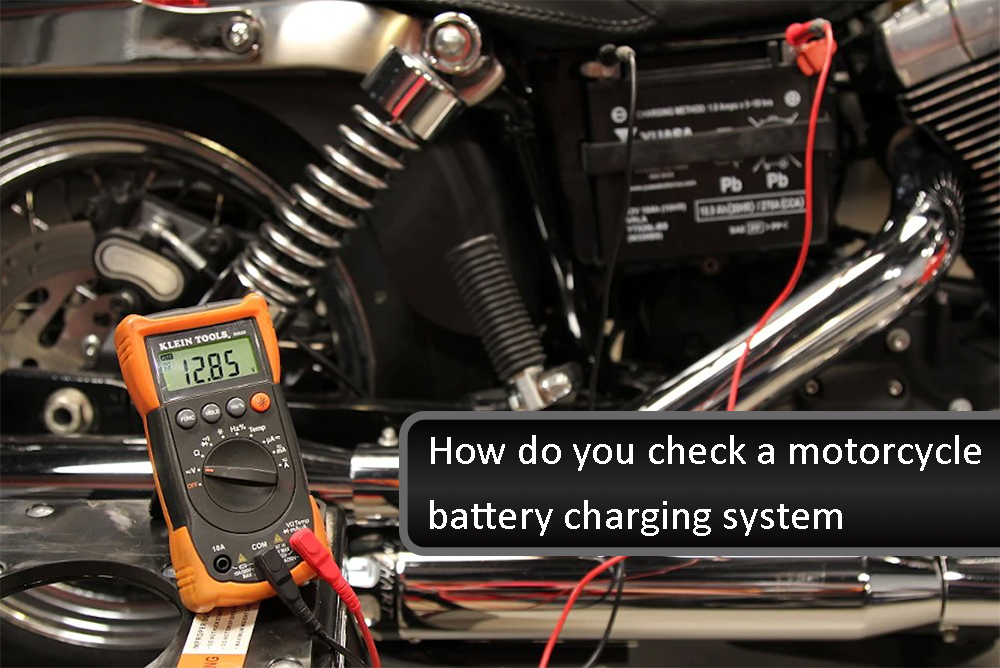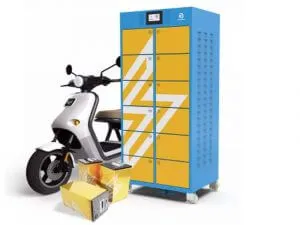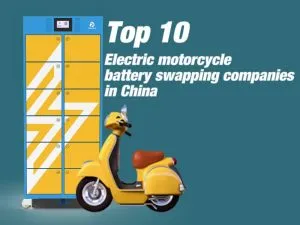Motorcycle battery charging system components, functions and maintenance

In this article, we’ll be looking at the components, functions, and uses of a motorcycle battery charging system to better understand the best way to properly handle any motorcycle battery.
Components of a battery charging system on a motorcycle
Every battery charging system has a similar setup with the same components across different motorcycle types. Each charging system within a motorcycle has three major components that work together to ensure the battery system functions properly. These components include;
● The battery.
● The Alternator or Stator.
● The Regulator or Rectifier.
Each component works with the others to ensure the proper functioning of the motorcycle battery charging system.
● The motorcycle battery functions as the storage unit for electrical energy, ready to supply that energy on-demand, and also acts as a protective unit for the motorcycle’s electrical system.
● The alternator functions to create alternating currents and energy that powers the motorcycle and also functions to charge the battery as well.
● The regulator, also known as the rectifier in some cases, serves to actively rectify or convert the alternating current(AC) released by the alternator into usable direct current(DC). This direct current can then be stored within the battery. The regulator also serves to regulate the amount of current produced within the battery to avoid overcharging when the battery is full.
What are the specifications of motorcycle batteries
Motorcycle batteries are produced just like any other battery and are only differentiated by size and chemistry. There are different sizes of motorcycle batteries depending on the voltage of each battery. Motorcycle battery sizes range from 12V batteries to 24V, 48V, 60V, and even up to 72V. All these batteries have different amp hour ratings which indicate how long each battery can supply a certain level of current.
For instance, a motorcycle battery could be rated at 48V 100Ah, which means that the battery can supply 100 amps of current for approximately 1 hour. This could also be said that the same battery can produce 20amps of current for 5 hours depending on the current demand of the motorcycle. These ratings also affect the motorcycle’s battery charging system as it would determine how long it would take the battery to be fully charged.
How does the battery charging system work on a motorcycle
The three components within the motorcycle’s battery charging system work together to produce, regulate and store the electrical current needed within the battery. The system works with the alternator, also known as the stator, spinning the crankshaft inside the engine, a rotation that generates alternating current(AC). The regulator then converts the AC to DC as well as maintains the voltage range within the system to prevent overcharging. This generated DC is then sent to be stored within the battery to be used when needed.
How do you check a motorcycle battery charging system
Checking a battery charging system involves checking all parts of the system, most especially the battery voltage. To do this you’ll need a multimeter or voltmeter which you can connect to the terminals of the battery and check the voltage readings. A low voltage reading may indicate the battery is low and needs to be charged but can also mean the battery charging system isn’t working effectively.
In order to measure the charging voltage accurately, the battery can be connected to the car and measured. When the charging voltage of the motorcycle is increased, the voltage at both ends of the battery should be measured between 13.5V and 15V. If it exceeds 15V, the charging capacity is generally too large and the battery will be damaged.
When replacing parts such as the charging coil and rectifier, it is also necessary to pay attention to whether the replaced parts match the original car circuit, otherwise it will also affect the charging, and each connector should also be carefully checked to see if it is well connected. In addition to measuring charging, it is also necessary to check whether there is discharge leakage in the entire vehicle circuit, whether there are indicators that cannot be turned off for a long time, and whether the ground wire in the circuit is corroded and rusted.
What drains a motorcycle battery
There are a few things that could be the reason why a motorcycle battery is draining, most of which occur while riding. Some of the major reasons include having a bad battery. A bad, low-quality battery would drain and discharge even while charging is ongoing which is why it is important to purchase reliable batteries from reliable lithium ion battery manufacturer.
Therefore, it is best to use a battery with a low self-discharge rate, such as a lithium battery whose self-discharge rate is only 3% per month. Other reasons for a draining battery could be a faulty battery charging system such as a bad regulator/rectifier, poor battery terminal connections, and too much electrical demand on the battery as a result of electrical add-ons. Another reason could simply just be the battery is old and needs to be replaced.
How to maintain a battery charging system
Maintaining a battery charging system involves taking care of all the components of the system and not just the battery itself. When maintaining the battery there are certain key things to note and avoid which include;
● Avoid fully charging or discharging the battery. This can be done effectively by using a battery with a BMS such as a lithium battery so that charging is cut off automatically even when you’re on the road.
● Disconnect the battery when not in use to avoid discharging it too much.
● Place the battery in a cool moisture-free location at an ideal temperature.
You should also perform regular check-ups on the alternator as well as the regulator to ensure they are working at optimal levels.
All in all, it involves safety inspection, fastener inspection, identification inspection, battery inspection and charging function inspection.
Does a motorcycle stator charge the battery
The motorcycle battery charging system has different components that work to charge the battery, one of which is the mechanism known as the stator. The stator or alternator is located within the motorcycle engine and works by spinning the crankshaft which then generates current that is then converted by the regulator to charge the battery.
Why is my motorcycle battery not holding a charge
There are several reasons why a motorcycle battery no longer holds a charge with the most common reason being that the battery has expired. All batteries have a shelf life and are rated to last for a limited time, so if the battery has reached its expiry date then it would no longer hold a charge regardless of the battery charging system in place. This is why it is important to use a battery with the longest life span possible which is lithium ion motorcycle battery.

Battery charging system of the motorcycle battery swapping station
Charging a motorcycle battery has now been made easy with the presence of battery swapping stations. These swapping stations make use of a reliable battery charging system when charging, some of their charging practices include;
● Real-time SOC and voltage monitoring while charging.
● Only authorized charging devices and chargers are used to provide the best compatible charging.
● Uses intelligent safe charging to ensure battery protection at all times.
● Uses intelligent fire and safety warning systems for early warning and alarms.
So for those takeaways and couriers who need to charge once a day, the battery swapping station can improve delivery efficiency and charging safety, and avoid accidents caused by improper charging during the charging process.


























